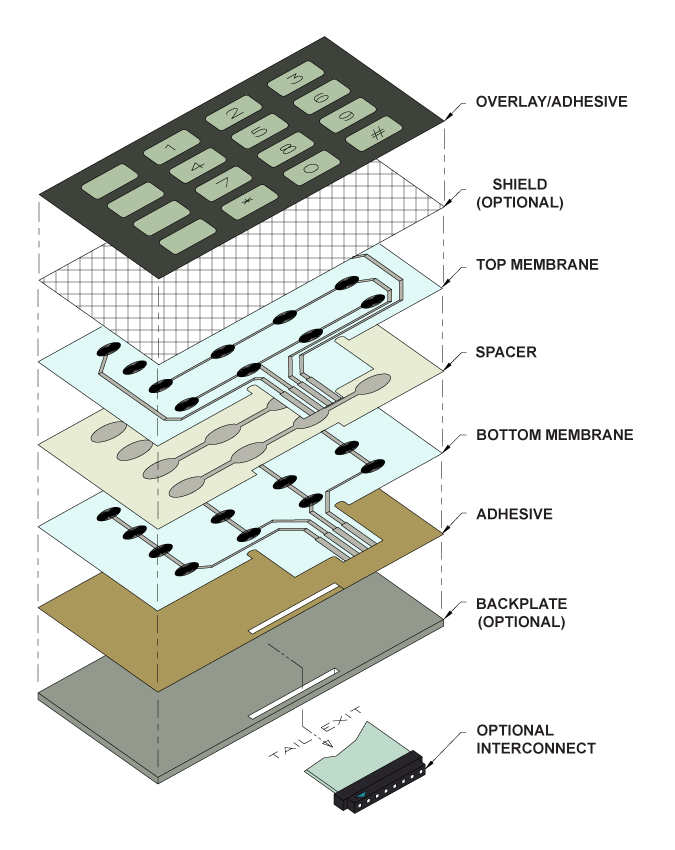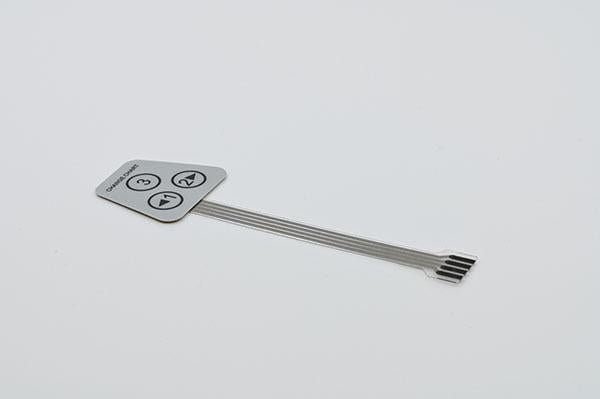The Full Overview to Membrane Switch Technology and Its Applications
The Full Overview to Membrane Switch Technology and Its Applications
Blog Article
Exactly How Membrane Layer Changes Add To the Toughness of Electronic Control Panels
Membrane switches play a critical role in improving the longevity of digital control panels, mostly via their multi-layered building which supplies efficient security against ecological factors such as moisture and dirt. The absence of relocating components considerably lowers the chance of mechanical failures, making membrane switches suitable for demanding applications.
Definition of Membrane Layer Switches

Membrane switches are created to be slim and light-weight, making them ideal for applications where space is limited. They can be made in different forms, dimensions, and shades, offering adaptability in design that satisfies visual and useful demands. In addition, membrane layer buttons can include various technologies, such as tactile comments and LED indications, boosting customer experience.
As a result of their construction, membrane switches are typically immune to dust, wetness, and general wear, adding to their toughness sought after settings. Their smooth layout not just assists in simple cleaning but additionally decreases the threat of mechanical failing, making them a recommended option for makers looking for trustworthy customer interfaces in their digital control panels.
Protection Versus Ecological Variables
The layout of membrane layer changes inherently provides a level of security versus various environmental variables, which is essential for keeping functionality in challenging problems - Membrane Switch. These buttons are usually created with layers of adaptable products that protect internal parts from dampness, dust, and pollutants. By enveloping the circuitry, membrane switches over reduce the risk of short circuits and deterioration, which can dramatically hinder performance
In addition, the use of durable adhesives and sealants during manufacturing enhances their resistance to ecological challenges. Membrane layer switches can endure direct exposure to chemicals and solvents, making them suitable for sectors such as food processing and medical care, where hygiene and sanitation are vital. Their smooth surface layout also protects against the accumulation of dirt and microorganisms, facilitating much easier cleansing and maintenance.
Temperature level variations are one more ecological issue, and membrane layer buttons are engineered to work successfully across a wide variety of temperatures (Membrane Switch). This flexibility ensures that control board remain operational in numerous setups, from industrial settings to consumer see this here electronics
Effect On User Communication
Individual communication with electronic control panels is substantially influenced by the design and performance of membrane layer switches. These switches give a tactile interface that improves the general customer experience, enabling instinctive navigating and control. Their responsive nature guarantees that individuals get immediate comments upon activation, which is vital for jobs calling for accuracy and efficiency.
Moreover, the smooth surface of membrane changes assists in simple cleansing and upkeep, promoting customer self-confidence in the integrity of the interface. This tidiness is especially important in environments where health is extremely important, such as clinical or food handling settings. Furthermore, the small and light-weight layout of membrane layer changes contributes to the aesthetic appeal of control board, encouraging user involvement via a modern-day and smooth look.
Additionally, the combination of visual elements, such as published symbols and backlighting, assists users swiftly recognize features, minimizing the discovering curve connected with brand-new devices. Consequently, users can run gadgets much more effectively, leading to enhanced performance and contentment. In recap, membrane buttons play a critical role in enhancing customer interaction by incorporating performance, aesthetic appeals, and convenience of use, ultimately leading to boosted functional effectiveness.
Design Adaptability and Modification
Style adaptability and modification are crucial elements of membrane buttons, allowing suppliers to customize digital control panels to certain applications and customer demands. This versatility you can find out more permits for the combination of various style components, such as colors, graphics, and appearances, which can boost the visual charm and user interaction of the control board.
Membrane layer switches can be customized in shapes and size, suiting a large array of tools and applications, from industrial equipment to consumer electronic devices. This versatility ensures that producers can create intuitive interfaces that align with customer assumptions and functional needs. Additionally, the ability to integrate special functions such as backlighting or tactile comments even more boosts functionality, enabling for a more interactive experience.
Additionally, the manufacturing process for membrane switches sustains the rapid prototyping of layouts, making it possible for suppliers to repeat and fine-tune their concepts quickly. This capability not only increases the growth timeline however likewise makes sure that the last item meets specific functional and aesthetic criteria.

Cost-Effectiveness and Longevity
Cost-effectiveness and long life are substantial benefits of membrane layer switches, making them an appealing option for suppliers and end-users alike. These switches are usually cheaper to generate than standard mechanical buttons, mostly because of their simplified production procedures and the decreased number of elements required. This cost benefit expands not only to first production but also to lasting operational expenses, as membrane layer switches often need much less maintenance and have a reduced failing rate.
In addition, the durability of membrane switches over adds to their overall worth. Built from durable products, they are immune to environmental variables such as wetness, dirt, and chemicals, which can cause premature wear in various other switch types. The absence of relocating parts decreases mechanical failure, permitting membrane switches over to read maintain capability over extended durations.
This toughness is particularly beneficial in applications requiring constant performance under demanding problems, such as medical gadgets and commercial equipment. Inevitably, the combination of cost-effectiveness and longevity makes membrane layer switches a financially sensible selection for producers, giving reputable remedies that withstand the test of time while maximizing financial considerations.
Final Thought
To conclude, membrane switches dramatically enhance the durability of digital control board via their robust construction and protective functions. By efficiently shielding wiring from ecological hazards and lessening the threat of mechanical failure, these switches make sure regular performance sought after applications. The seamless design promotes health and convenience of maintenance, while modification options enable tailored solutions for numerous demands. On the whole, membrane switches over stand for a reliable and cost-effective choice for boosting the durability and performance of digital control systems.
Report this page